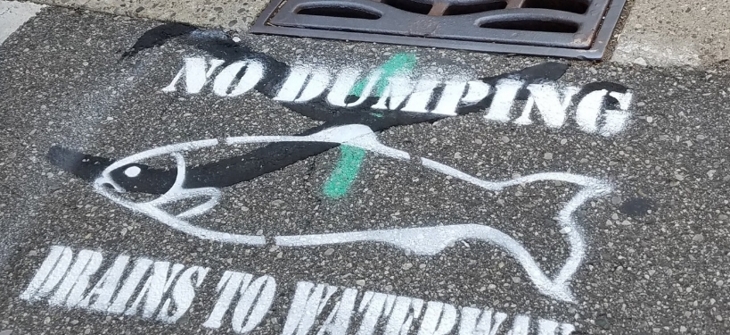
What Goes on at Outfalls When There is No Rain - A Primer on Illicit Discharge Detection and Elimination (IDDE) Programs
When It’s Not Raining: The Hidden Activity at Stormwater Outfalls
Eliminating illicit discharges within our storm sewers through an illicit discharge detection and elimination (IDDE) program is critical to improving the overall health of local waterways. Illicit discharges, like stormwater runoff generated within the municipal separate storm sewer system (MS4), flow directly into a receiving waterbody. Whereas post-construction stormwater control measures (SCMs) are designed to reduce typical pollutants (e.g. sediment, trash, and nutrients) in stormwater runoff prior to it entering receiving waters, illicit discharges pose a unique challenge because they contain atypical pollutants that can go untreated and may also increase the maintenance frequency of post-construction SCMs. Storm sewers and post-construction SCMs simply are not intended to receive, treat, or discharge dry weather runoff laden with atypical pollutants.
An illicit discharge1 is any discharge to a municipal separate storm sewer system (MS4) containing substances other than stormwater runoff, with some exceptions such as discharges from fire-fighting activity or air conditioning condensate. Common examples of illicit discharges include cross-connected sewer pipes (where sanitary sewer lines are inappropriately connected to storm sewer lines) or pouring oil down a storm drain instead of disposing of it properly. There are many other types of illicit discharges generated from residential, commercial, or industrial land uses. These discharges can occur consistently or infrequently and arrive at an outfall via direct (pipe or channel) or indirect (seepage) means. Local stormwater programs will define illicit discharges via local ordinance, so these should be referenced based upon on where you are located for appropriate context.
The requirement for both National Pollutant Discharge Elimination System (NPDES) Phase I and Phase II MS4 permit holders to establish IDDE programs has existed for decades for good reasons. Home values drop and recreational opportunities diminish when waterbodies are not safe for fishing or swimming. Contaminants, like bacteria, found in illicit discharges can cause beach closures or restrict shellfish harvesting. Others, like industrial rinse water, can create sheens on the water surface or increase in-stream temperatures to dangerous levels for aquatic life. The result is negative environmental, fiscal, and public health impacts within the affected communities. Additionally, illegal dumping of pollutants and uncontained spills have led to fish kills and wildlife losses across the country. Protecting our waterways from harmful pollution caused by illicit discharges is therefore not aspirational, but rather, completely necessary.
The primary goal of an effective IDDE program is to identify, correct, and prevent illicit discharges. Most illicit discharges can be prevented rather easily with proper inspection and enforcement mechanisms in place. The old adage- “an ounce of prevention is worth a pound of cure”- applies to IDDE programs. There are several core elements to an IDDE Program:
- Mapping and Outfall Database Creation
- Outfall Monitoring
- Enforcement
- Public Outreach and Education
I once completed annual IDDE inspections in a past professional life. I was fortunate to work for a community that valued local water quality and put significant resources towards preventing illicit discharges. We maintained a proactive program with a sophisticated (for the time) outfall database, detailed inspection procedures, frequent enforcement, and established public education programming. Still, I was often surprised at the number of new outfalls found or the types of discharges discovered during inspections. I can vividly remember one such instance where my colleague and I physically traced sudsy runoff to a residence where the owner had “creatively” arranged a series of pipes across their yard to discharge the washing machine into an adjacent drainage ditch. The corrective action experience turned into a learning opportunity for us all and resulted in successful elimination of an illicit discharge.
Illicit discharges are illegal. Do not hesitate to report illicit discharges to your local stormwater program. Clean, healthy waterways are valuable community assets. Illicit discharges, if unchecked, can turn these assets into liabilities. When we repair illicit discharges, atypical pollutants that are not intended to be treated by storm sewers and post-construction SCMs are prevented from entering receiving waters. By doing so, public health is preserved, and negative economic and environmental outcomes are prevented. In the end, we all win when illicit discharges are eliminated.
1. 140 CFR 122.26(b)(2) of Federal Regulations defines an illicit discharge as any discharge to an MS4 that is not composed entirely of storm water, except allowable discharges pursuant to an NPDES permit, including those resulting from fire-fighting activities.
